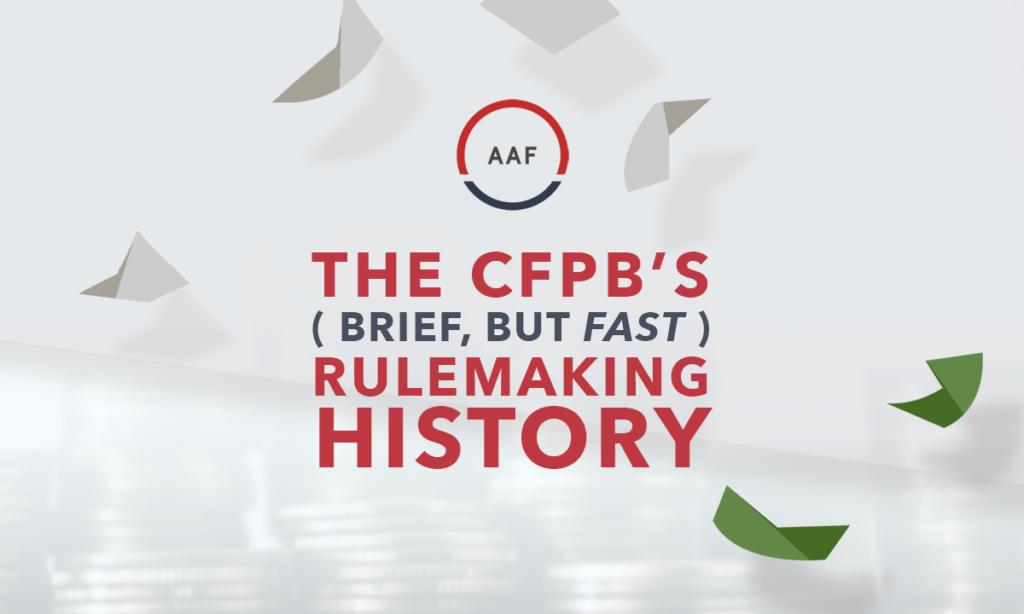Insight
August 30, 2016
The Consumer Financial Protection Bureau’s Brief, but Fast, Rulemaking History

Since its inception, the Consumer Financial Protection Bureau (CFPB) has had a short-lived, but controversial history. Based on the most recent Unified Agenda of Federal Regulations, the agency has finalized 49 rules. Just 26 of those measures have imposed $2.8 billion in costs with an associated 16.9 million paperwork burden hours. For perspective, it would take 8,450 employees working full-time (2,000 hours) to complete the agency’s new recordkeeping and reporting requirements. Although the burdens are notable, the median pace of rulemaking is 3.5 times faster than that of significant executive agency actions.
The average CFPB rule takes just 197 days to complete (from initial publication in the Unified Agenda to final publication in the Federal Register). The median time is even shorter, at just 114 days. Although some claim that CFPB rules are actually taking too long to complete, these analyses have proven to be rather arbitrary; adding 90 days to these figures only raises the average to 287 days and the median to 204 days, still well less than a year for the rulemaking life.
Although agencies likely begin work on rules before entry in the Unified Agenda, they also likely conclude work before official publication in the Federal Register. The American Action Forum has documented the phenomenon of publication delay in the past: agencies finish a rulemaking and publish a version online, but Federal Register publication, through the public inspection docket or otherwise, can sometimes lag for up to six months. Some CFPB rules wait up to 41 days for formal publication. Even with these bureaucratic publication delays, the average CFPB rule still moves far faster than the average cabinet agency rulemaking.
GAO records just seven major CFPB rulemakings and the averages there are lengthier than the total sample, but hardly proceeding at a snail’s pace: 326 days. The median time is higher, at 408 days. However, one of these major rules (“Operations in Rural Areas Under the Truth in Lending Act”) was released 53 days before initial publication in the Federal Register. It was issued without a proposed rule to allow the public and Members of Congress to comment.
These relatively short rulemaking timelines have generated a fair share of mistakes. CFPB has had to issue 13 corrections, comprising 57 pages in the Federal Register. This amounts to an “error rate” in the agency’s regulatory slate of roughly 25 percent. Three of these rules that later required corrections were published as final rules in the Federal Register before official publication in the Unified Agenda, one by 121 days.
In fact, of the 49 rules included in the sample, 18 (or 36 percent of the total) were published as final rules before the public learned of them in the Unified Agenda. In one instance, CFPB published a final rule more than 411 days before notice in the agenda. With all deference to the agency, excluding these “premature” rulemakings still yields an average length of 376 days, well ahead of the average economically significant rulemaking from a cabinet-level agency.
Conclusion
CFPB has had a brief and expensive rulemaking history. Moreover, these rulemakings have moved 3.5 times faster than regulations from cabinet agencies. More troubling is the amount of public notice for some of these rules. In 18 instances, a final rule was published before it had been released in the Unified Agenda, amounting to 36 percent of the agency’s rulemaking slate. For critics of CFPB who had concerns about the agency’s rulemaking authority and accountability, its pace should offer a fresh set of issues.










